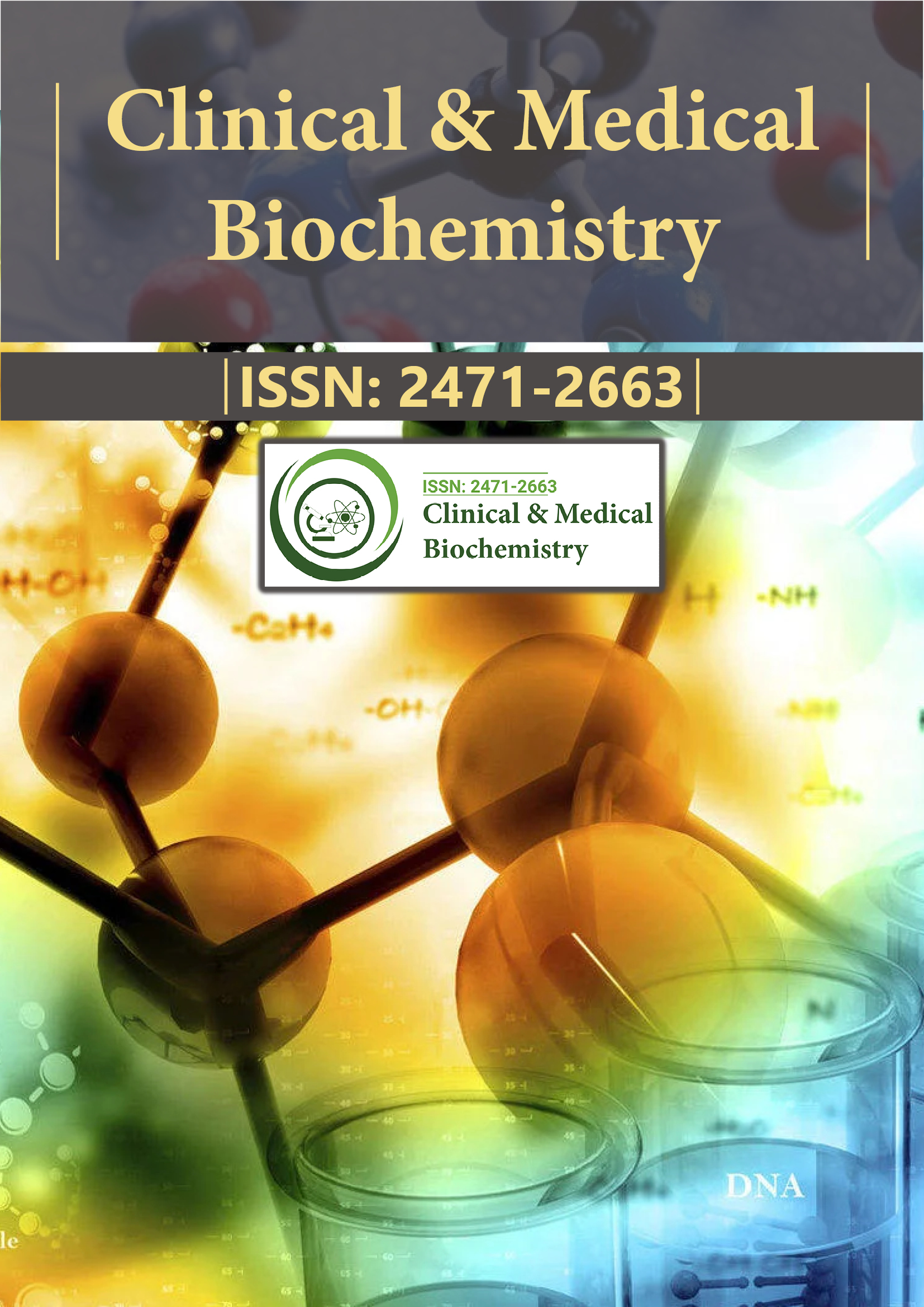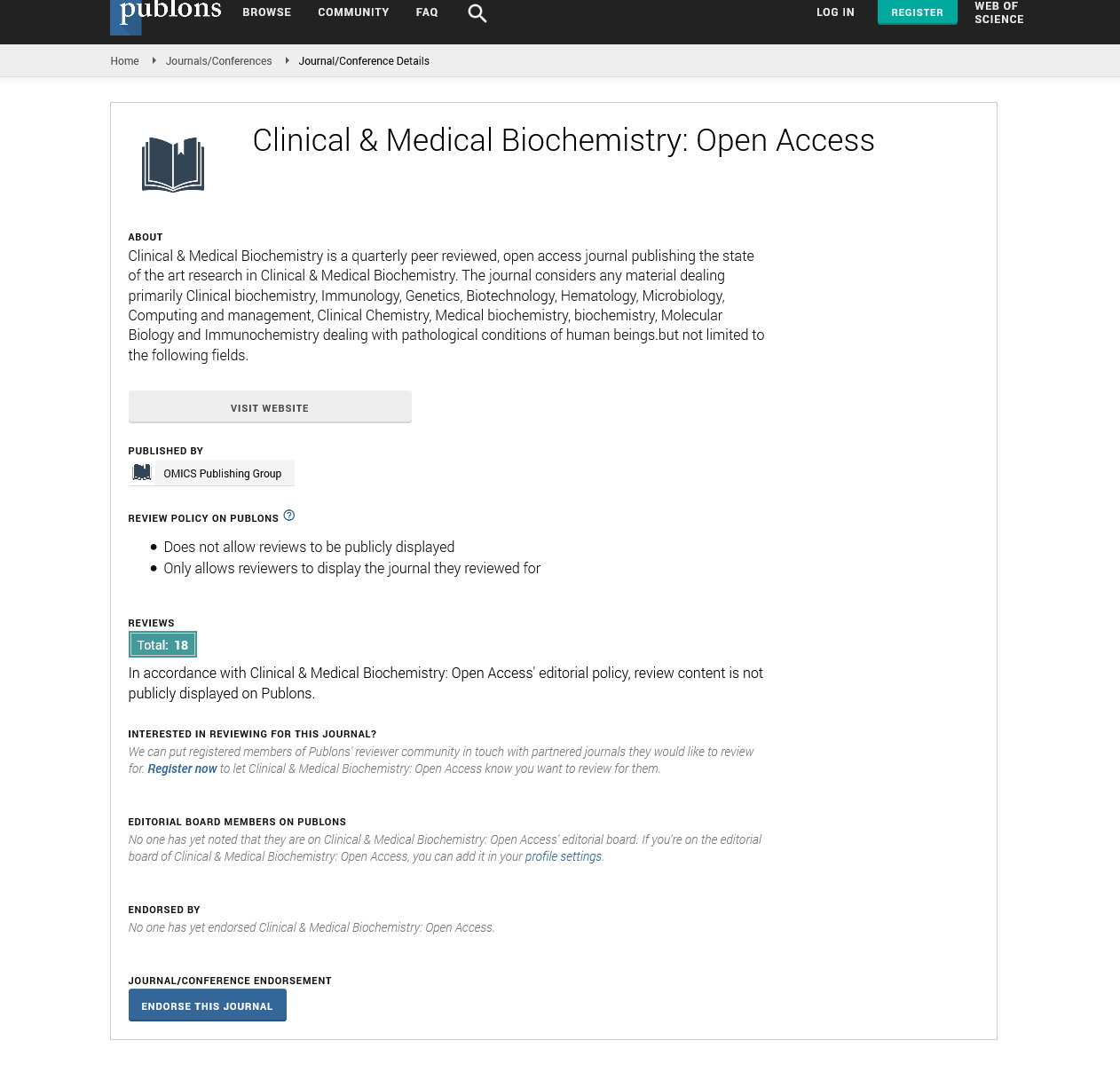Indexed In
- RefSeek
- Directory of Research Journal Indexing (DRJI)
- Hamdard University
- EBSCO A-Z
- OCLC- WorldCat
- Scholarsteer
- Publons
- Euro Pub
- Google Scholar
Useful Links
Share This Page
Journal Flyer

Open Access Journals
- Agri and Aquaculture
- Biochemistry
- Bioinformatics & Systems Biology
- Business & Management
- Chemistry
- Clinical Sciences
- Engineering
- Food & Nutrition
- General Science
- Genetics & Molecular Biology
- Immunology & Microbiology
- Medical Sciences
- Neuroscience & Psychology
- Nursing & Health Care
- Pharmaceutical Sciences
Commentary - (2025) Volume 11, Issue 1
Protecting the Bodyâs Lifeline: Insights into Liver Disease and Its Management
Shao Jiadong*Received: 26-Feb-2025, Manuscript No. CMBO-25-29234; Editor assigned: 28-Feb-2025, Pre QC No. CMBO-25-29234; Reviewed: 14-Mar-2025, QC No. CMBO-25-29234; Revised: 21-Mar-2025, Manuscript No. CMBO-25-29234; Published: 28-Mar-2025, DOI: 10.35841/2471-2663.25.11.245
Description
Liver disease refers to any disorder or condition that damages or impairs the normal functioning of the liver. As one of the most vital organs in the human body, the liver performs over 500 essential functions including detoxification, protein synthesis and bile production, metabolism of nutrients and drugs and regulation of blood clotting. When the liver becomes diseased or injured, these processes are disrupted, potentially leading to serious and sometimes life-threatening complications. Liver disease is a broad term that encompasses a variety of conditions such as hepatitis, fatty liver disease, cirrhosis, alcoholic liver disease, liver cancer and genetic disorders like hemochromatosis and Wilson’s disease.
Liver disease can develop gradually or appear suddenly depending on the underlying cause. Some forms, such as viral hepatitis or toxin-induced liver damage, may be acute and resolve with proper treatment, while others like Non-Alcoholic Fatty Liver Disease (NAFLD) and cirrhosis tend to be chronic and progressive. The causes of liver disease are diverse. Viral infections are a major contributor, with hepatitis A, B and C being the most well-known. Hepatitis A is often spread through contaminated food or water, while hepatitis B and C are usually transmitted via blood, sexual contact or from mother to child during childbirth. Chronic hepatitis B and C infections are significant global health concerns due to their potential to cause long-term liver inflammation, fibrosis and liver cancer.
Alcohol abuse is another leading cause of liver disease, commonly resulting in alcoholic hepatitis, fatty liver and ultimately cirrhosis. Excessive alcohol consumption damages liver cells, promotes inflammation and impairs the liver’s ability to regenerate. Non-alcoholic fatty liver disease, on the other hand, occurs in individuals who consume little to no alcohol but have fat accumulation in the liver, often associated with obesity, diabetes, high cholesterol and metabolic syndrome. This condition can progress to Non-Alcoholic Steatohepatitis (NASH), fibrosis and cirrhosis if left unmanaged. Inherited liver diseases such as hemochromatosis, which causes iron overload and Wilson’s disease, which results in copper accumulation, can also severely affect liver health if not diagnosed early.
Symptoms of liver disease may vary depending on the type and stage but often include fatigue, nausea and vomiting, abdominal pain, loss of appetite, yellowing of the skin and eyes (jaundice), dark urine, pale stools, swelling in the legs or abdomen (ascites) and easy bruising or bleeding. In many cases, liver disease is initially silent, showing no noticeable signs until significant damage has occurred. This underscores the importance of regular check-ups and blood tests in individuals at risk.
Diagnosis of liver disease typically involves a combination of medical history, physical examination, blood tests, imaging studies such as ultrasound or CT scan and sometimes liver biopsy. Liver function tests measure levels of enzymes, bilirubin and proteins to assess the extent of liver damage. Imaging can reveal structural changes like fatty infiltration, scarring or tumors, while biopsy provides definitive information on inflammation, fibrosis or malignancy.
Treatment of liver disease depends on the specific condition and its severity. For viral hepatitis, antiviral medications are available that can either cure the infection (in the case of hepatitis C) or suppress viral replication (in the case of hepatitis B). Lifestyle changes such as alcohol cessation, weight loss and a balanced diet play a critical role in managing alcoholic and non-alcoholic liver diseases. In advanced stages of liver disease, complications like portal hypertension, variceal bleeding, hepatic encephalopathy and liver failure may require hospitalization and intensive management. Liver transplantation is the final option for patients with end-stage liver disease who are unresponsive to medical therapy. It is a complex but life-saving procedure that offers hope for long-term survival and recovery.
Prevention is one of the most effective strategies for reducing the burden of liver disease. Vaccines are available for hepatitis A and B and are highly effective in preventing these infections. Avoiding risky behaviors such as unprotected sex, sharing needles, or excessive alcohol use greatly reduces the chance of liver damage. Regular monitoring of blood sugar, cholesterol and body weight can help prevent metabolic-related liver diseases. Safe food and water practices are crucial in regions where hepatitis A and E are common. For individuals with known liver conditions, adherence to prescribed medications, routine lab monitoring and avoiding over-the-counter drugs or supplements that may harm the liver are essential for maintaining liver health.
Conclusion
In conclusion, liver disease is a significant global health challenge that can affect individuals of all ages and backgrounds. It encompasses a wide range of conditions with varying causes, symptoms and outcomes. While some liver diseases are reversible with early intervention, others can progress silently to irreversible damage and life-threatening complications. Understanding the risk factors, recognizing early warning signs and seeking timely medical care are crucial steps in protecting liver health. With continued research, public education and improved access to healthcare services, many cases of liver disease can be prevented or effectively managed, leading to better quality of life and longer survival for affected individuals.
Citation: Jiadong S (2025). Protecting the Body's Lifeline: Insights into Liver Disease and Its Management. Clin Med Bio Chem. 11:245.
Copyright: © 2025 Jiadong S. This is an open-access article distributed under the terms of the Creative Commons Attribution License, which permits unrestricted use, distribution and reproduction in any medium, provided the original author and source are credited.

